Tuesday, March 31, 2020
Monday, March 30, 2020
Oil Tanks Are So Full That Traders May Stow It on Pipe Networks
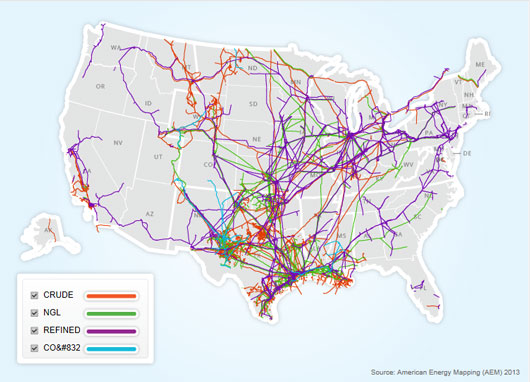
More than 190,000 miles of liquid petroleum pipelines traverse the
United States. They connect producing areas to refineries and chemical
plants while delivering the products American consumers and businesses
need. Pipelines are safe, efficient and, because most are buried,
largely unseen. They move crude oil from oil fields on land and offshore
to refineries where it is turned into fuels and other products, then
from the refineries to terminals where fuels are trucked to retail
outlets. Pipelines operate 24 hours a day, seven days a week.
The glut of U.S. oil is growing so fast that at least one pipeline owner is concerned wily traders may try to stow away crude on its network until prices improve.
Plains All American Pipeline LP is requiring customers to prove they
have a buyer or place to offload crude they’re shipping through the
company’s pipes, according to people familiar with the matter. The idea
is to prevent anyone from using Plains’s network to park oil in lieu of
higher prices.
With the key storage hub in Cushing, Oklahoma, already more than half full, concern is rising among investors and oil producers that the surfeit of American crude may overwhelm storage capacity and force companies to shut down wells. Shale explorers are dialing back drilling but it won’t have a meaningful impact on overall crude supplies any time soon.
With the key storage hub in Cushing, Oklahoma, already more than half full, concern is rising among investors and oil producers that the surfeit of American crude may overwhelm storage capacity and force companies to shut down wells. Shale explorers are dialing back drilling but it won’t have a meaningful impact on overall crude supplies any time soon.
Similar anxieties are wracking the fuel markets as the Covid-19
outbreak saps demand and foreign producers swamp global markets with
oil. Colonial Pipeline Co., operator of the busiest U.S. fuels conduit,
last week warned clients that any gasoline or diesel on their system
that had no end-user or storage reservation would be sold off to the
highest bidder.
Sunday, March 29, 2020
Tullow Terminates Maersk Venturer drilling contract for Ghana program
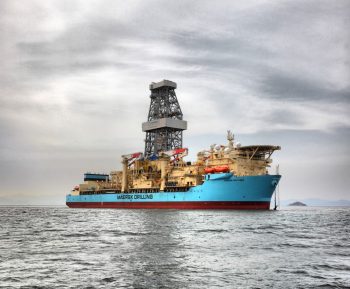
https://www.petroleumafrica.com/tullow-terminates-maersk-venturer-drilling-contract-for-ghana-program/
Maersk Drilling announced that it has received notice from Tullow Oil
that it would be terminating its contract for services related to its
drilling program offshore Ghana which was to utilize the Maersk Venturer drillship.
Since February 2018, Maersk Venturer has worked for Tullow
offshore Ghana with an expected end of contract in February 2022. The
rig is now expected to end the contract in June 2020. As a consequence
of the termination, Maersk Drilling’s revenue contract backlog is
reduced by USD 175m covering the period from the end of the contract to
February 2022.
Subject to commercial prospects, Maersk Drilling will take measures to reduce Maersk Venturer’s operating costs following the end of the contract.
Maersk Drilling maintains the profitability guidance for 2020 of
EBITDA before special items of USD 325-375m as announced on 20 March
2020.
Friday, March 27, 2020
U.S. indicts Venezuela’s Maduro on narcoterrorism charges, offers $15 million reward for his capture

Venezuelan President Nicolás Maduro speaks during a news conference this
month at the Miraflores presidential palace in Caracas. (Manaure
Quintero/Reuters)
https://www.washingtonpost.com/world/the_americas/the-united-states-indicts-venezuelas-maduro-on-narco-terrorism-charges/2020/03/26/a5a64122-6f68-11ea-a156-0048b62cdb51_story.html
March 26, 2020 at 5:42 p.m. EDT
Attorney General William P. Barr announced the indictments of Maduro and other current and former Venezuelan officials
on charges including money laundering, drug trafficking and
narcoterrorism. Barr and other U.S. officials alleged a detailed
conspiracy headed by Maduro that worked with Colombian guerrillas to
transform Venezuela into a transshipment point for moving massive
amounts of cocaine to the United States.
The
action, rumored for years, comes as the U.S.-backed opposition movement
to oust Maduro has struggled to maintain momentum. The coronavirus has effectively halted the opposition rallies that have been a signature of the movement.
On Thursday, Barr accused Maduro of “deploying cocaine as a weapon” to undermine the United States.
“Maduro
and the other defendants expressly intended to flood the United States
with cocaine in order to undermine the health and well-being of our
nation,” Barr said during a news conference in Washington.
The
charges against Maduro, brought in indictments in New York and Florida,
carry a mandatory minimum sentence of 50 years in prison and a maximum
of life. The U.S. Attorney in Manhattan, Geoff Berman, seemed to concede
that U.S. authorities could not arrest Maduro in Venezuela, but noted
that the leader might travel outside his country.
The charges, described as “a decade” in the making, recalled the
U.S. indictment of Panamanian strongman Manuel Antonio Noriega in 1988.
In that case, President George H.W. Bush eventually ordered U.S. forces
to invade and capture Noriega. But Venezuela’s far better-equipped
military and Russian support for Maduro would complicate any attempt by
the U.S. to take him into custody the same way.
The Trump administration broke diplomatic relations with Maduro last year and recognized National Assembly leader Juan Guaidó
as Venezuela’s legitimate president. Barr said officials expect to
arrest Maduro, but declined to say whether the administration would
entertain a military option, as it did in Panama.
“We’re
going to explore all options for getting custody,” Barr said.
“Hopefully, the Venezuelan people will see what’s going on and will
eventually regain control of their country.”
Also
charged were the head of Venezuela’s National Constituent Assembly, a
former director of military intelligence, a former high-ranking general,
the defense minister and the chief justice of the Supreme Court. Some
of the indicted officials — notably Defense Minister Vladimir Padrino
López and Chief Justice Maikel Moreno — were involved in plotting a military uprising against Maduro
last spring, but failed to live up to secret pledges to move against
the president. The charges suggest the Justice Department was pursuing
their alleged links to narcotrafficking even as U.S. officials endorsed
and encouraged the efforts of the Venezuelan opposition to solicit their
participation in that plot.
The indictments are a sharp escalation in tactics that officials have
gradually ramped up against Maduro since President Trump entered the
White House. A campaign that started with targeted sanctions on
individual Venezuelan officials broadened to measures that have locked the government out of the U.S. financial system. A U.S. oil embargo imposed last year has denied Caracas its single largest source of hard currency.
Maduro rejected the U.S. charges Thursday.
“There’s
a conspiracy from the United States and Colombia and they’ve given the
order of filling Venezuela with violence,” he said on Twitter. “As head
of state I’m obliged to defend peace and stability for all the
motherland, under any circumstances.”
Maduro is scrambling to cope with an outbreak of the coronavirus as Venezuela’s broken hospitals
reel from chronic shortages of medicines, dilapidated equipment and
unsanitary conditions. Barr suggested the pandemic had delayed
Thursday’s announcement, but he said the time was right because
Venezuela’s “people are suffering.”
“They
need an effective government that cares about the people,” Barr said.
“We think that the best way to support the Venezuelan people during this
period is to do all we can to rid the country of this corrupt cabal.”
In a January interview with The Washington Post,
Maduro scoffed at allegations that his government had established
agreements with Colombian guerrillas engaged in narcotrafficking and
kidnapping on the Venezuelan-Colombian border.
“It makes me laugh,” he said.
Prosecutors allege that Maduro and other Venezuelan officials have operated the Cartel do los Soles,
or Cartel of the Suns, since at least 1999, corrupting Venezuela’s
government institutions so they could flood the U.S. with hundreds of
tons of cocaine. They say the cartel worked with the Revolutionary Armed
Forces of Colombia, or FARC, to ship the drug by air and sea through
the Caribbean and Central America to the United States. (The FARC, a
Marxist guerrilla movement that engaged in a decades-long war against
the Colombian government, officially disbanded with the Colombian peace
accord of 2016, but more than 2,500 dissident members remain active.)
Prosecutors allege that Maduro led the operation, negotiating shipment
quantities, directing the cartel to provide military-grade weapons to
the FARC and coordinating with officials in other countries to
facilitate the drug trafficking.
Barr said the Maduro government is “awash in corruption and criminality.”
“While
the Venezuelan people suffer, this cabal lines their pockets with drug
money and the proceeds of their corruption,” Barr said.
Venezuela’s
broken health system is uniquely vulnerable to coronavirus. Neighbors
are afraid the country will hemorrhage infected migrants.
U.S.
authorities charged myriad Venezuelan officials in separate drug and
money laundering cases in federal courts in New York, Florida and
Washington.
In
one case, prosecutors alleged Padrino López took bribes to allow drug
traffickers to fly planes in his country’s airspace without fear of
being shot down. In another, they said Moreno fixed criminal and civil
court cases in exchange for kickbacks — including dismissing a fraud
case against the state oil company and authorizing the sale of a $100
million General Motors plant in exchange for a cut of the proceeds.
U.S.
officials and Venezuelan opposition leaders have sought dialogue with
members of Maduro’s inner circle in an attempt to strip away or at least
weaken his internal support. By targeting several members of his inner
circle, the administration could push them to close ranks around Maduro,
complicating efforts to isolate him.
The indictments appear to conflict with long-standing administration
policy toward Maduro. For most of the last year, administration
officials repeatedly emphasized their desire for Maduro to leave
Venezuela for exile, where they pledged not to pursue him. “This is not
about revenge,” one senior official said last year. “We would be happy
to pay the airfare.”
By
reducing the likelihood of a negotiated settlement, they could be
putting Maduro in a position where he has little left to lose — and
could increase pressure on Guaidó, who has enjoyed a level of protection
under U.S. patronage.
In
what appeared to be a retaliatory move, Maduro’s attorney general on
Thursday announced an investigation into Guaidó and others for allegedly
plotting a “coup.”
U.S.
officials who deal with Venezuela policy say that the charges announced
Thursday had more to do with Justice Department investigations — and
the timing of grand juries weighing the matter in New York and Florida —
than any change of position within the administration.
“This was
not a policy move,” said one official, who spoke on the condition of
anonymity because the official was not authorized to speak publicly on
the matter.
Venezuela’s
opposition embraced the charges. Iván Simonovis, Guaidó’s security
commissioner, called the $15 million reward for Maduro’s capture and
conviction, and $10 million for others, powerful incentive for other
government officials to turn against them.
“There is a price for each one of them,” he told The Post. “You never know what could happen with that.”
Trump
administration officials have given strong support to Guaidó, notably
in his military uprising last April 30. That effort quickly petered out,
and is increasingly being viewed as Venezuela’s Bay of Pigs — a lost
opportunity to oust Maduro that might not come again.
One
of the Venezuelans charged, retired Gen. Cliver Alcalá Cordones, posted
video clips on Twitter proclaiming his innocence. He said he was living
in Barranquilla, Colombia, with the full knowledge of the Colombian
government, and had been cooperating for some time with both Guaidó and
American officials.
“I'm at my home,” he said. “I'm not running.”
Last
year, Maduro’s former spy chief, Gen. Manuel Ricardo Cristopher
Figuera, told The Washington Post that he had provided details on
locations and activities of Colombian drug cartels and criminal gangs operating on Venezuelan soil directly to Maduro, but Maduro declined to act.
“I
gave him a folder with this and told him, ‘Look, this is the situation
with the guerrillas,’” said Figuera, who turned against Maduro last year
and is now in the United States.
“They never took action,” he said. “You could say that Maduro is a friend of the guerrillas.”
Analysts see differences between going after Maduro now and Noriega in the 1980s.
Maduro
maintains a firmer grip on the Venezuelan military than Noriega had,
and its officers have been less influenced by contact and cooperation
with the U.S. military than were Panama’s. Venezuela’s military is
better equipped with more sophisticated Russian weaponry.
Maduro’s
government also has more international support. The Russians and
Cubans, and to a lesser extent, the Chinese, have stood behind him, and
Moscow has turned the shipment of Venezuelan oil to circumvent U.S. sanctions into a cash cow.
Perhaps
the biggest difference is that Maduro, although broadly unpopular, is
still seen by some in Venezuela as the anointed successor of Hugo
Chávez, the father of the socialist state, who died of cancer in 2013.
Maduro’s inner circle maintains control of the Venezuelan socialist
movement, known as Chavismo, a still-formidable apparatus.
“You
can lob a cruise missile and take him out, but you don’t take out
Chavismo,” said Eric Farnsworth, vice president of the Council of the
Americas and the Americas Society. “You don’t really take out the regime
unless the military lays down its weapons and says we’re going to
support the Americans. I don’t see that happening.”
Ana Vanessa Herrero in Caracas contributed to this report.
Thursday, March 26, 2020
History’s largest oil glut months away from topping world storage while tanker freight rates explode
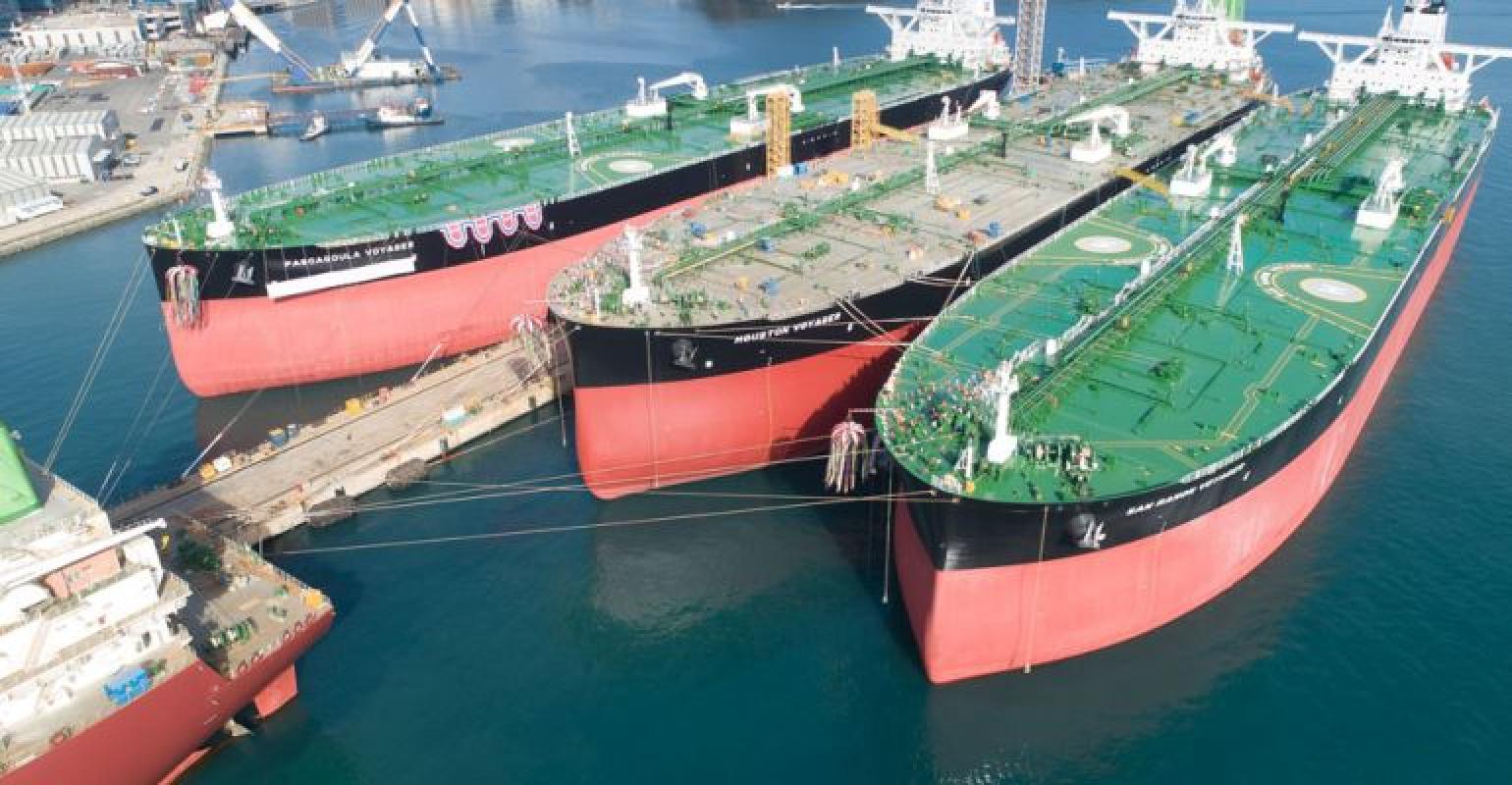
The
largest oil supply surplus the world has ever seen in a single quarter
is about to hit the global market from April, creating an imbalance of
around 10 million barrels per day (bpd).
An exclusive Rystad Energy analysis shows global storage infrastructure
is in trouble and will be unable to take more crude and products in
just a few months.
Our current liquid balances show supply surpassing oil demand by an
average of nearly 6 million bpd in 2020, resulting in an accumulated
implied storage build of 2.0 billion barrels this year.
Based on our rigorous analysis, we find that the world currently has
around 7.2 billion barrels crude and products in storage, including 1.3
billion to 1.4 billion barrels currently onboard oil tankers at sea. We
estimate that, on average, 76% of the world’s oil storage capacity is
already full.
There is essentially no idle storage capacity available on tankers, as
Saudi Arabia and other producers might have already wiped out the
available population of Very Large Crude Carriers (VLCC) for March and
April 2020.
Our data shows that the theoretical available storage capacity at
present is just 1.7 billion barrels onshore for crude and products
combined. Using our estimate of an average of 6.0 million bpd of implied
oil stock builds for 2020, in theory, it would take nine months to fill
all onshore tanks. However, in practice we will hit the ceiling within a
few months due to operational constraints.
“The current average filling rates indicated by our balances are
unsustainable. At the current storage filling rate, prices are destined
to follow the same fate as they did in 1998, when Brent fell to an
all-time low of less than $10 per barrel,” says Paola Rodriguez-Masiu,
Rystad Energy’s Senior Oil Markets analyst.
Learn more in Rystad Energy’s OilMarketCube.
Floating storage normally uses VLCCs, which can carry about 2.0 million
barrels. We estimate that there are about 802 VLCCs active globally
with a combined capacity of 250 million deadweight tonnage (dwt),
capable of collectively storing 1.8 billion barrels. The entire global
fleet, including smaller Suezmax and Aframax vessels, is estimated to
have a combined capacity of 630 million dwt or 4.6 billion barrels.
However, to keep oil flowing between regions, a ballast of around 50%
is necessary as cargos often need to travel with no cargo to the
destinations where they pick up oil, meaning that at any given time
around half of the world's fleet is booked traveling to consumer
destinations, while the other half is empty on their way to pick up oil.
This reduces the number of available vessels to about 57.
In addition, the workable available capacity is significantly lower as
many of these vessels are under long-term charter deals or locked in
ownership agreements, such as COSCO vessels with PetroChina. Waiting
time at ports and repairs further shrinks the workable available
capacity.
Due to the above-mentioned factors, using supertankers to float oil
offshore might not be a viable option this time, as the planned OPEC+
output hike has not only limited the workable available vessels but also
caused a surge in tanker freight rates. The cost of renting a VLCC on
the spot market has risen from about $20,000 per day last month to
between $200,000 and $300,000, depending on destination.
“We find that liquid supply will have to be reduced by around 3.0
million to 4.0 million bpd compared to the current production planning
to bring the implied stocks builds closer to 2.0 million to 3.0 million
bpd for 2020, which is the level of implied stocks build that we find
sustainable in the short to medium term,“ Rodriguez-Masiu concludes.
Wednesday, March 25, 2020
US urges Saudi Arabia to ‘rise to the occasion’ and end its oil price war with Russia
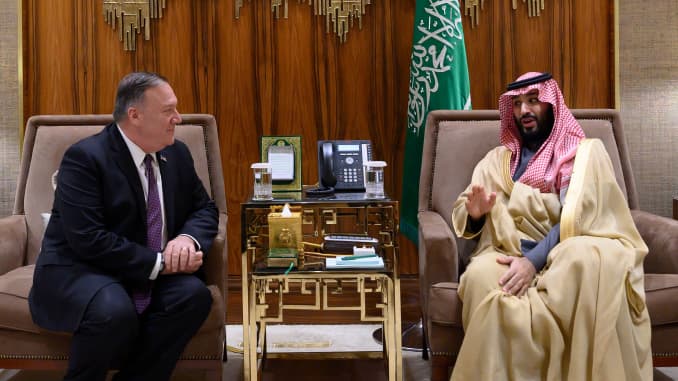
US Secretary of State
Mike Pompeo (C-L) meets with Saudi Arabia’s Crown Prince Mohammed bin
Salman (C-R) at Irqah Palace in the capital Riyadh on February 20, 2020.
ANDREW CABALLERO-REYNOLDS | POOL | AFP via Getty Images
https://www.cnbc.com/2020/03/25/oil-prices-and-coronavirus-us-urges-saudi-arabia-to-end-russia-feud.html
- Oil prices have more than halved since climbing to a peak in January, with analysts warning crude futures could soon plunge into the teens over the coming weeks.
- It comes as the coronavirus pandemic continues to crush oil demand worldwide and with no end in sight to the ongoing price war between Riyadh and Moscow.
The U.S. has called on OPEC kingpin Saudi Arabia to put a stop to its ongoing oil price war with non-OPEC leader Russia.
In a statement released by the U.S. State Department Wednesday, a spokesperson confirmed that Secretary Mike Pompeo had spoken with Saudi Crown Prince Mohammed bin Salman on Tuesday.
“Secretary Pompeo and the Crown Prince focused on the need to maintain stability in global energy markets amid the worldwide response,” the statement said.
“The Secretary stressed that as a leader of the G-20 and an important energy leader, Saudi Arabia has a real opportunity to rise to the occasion and reassure global energy and financial markets when the world faces serious economic uncertainty,” it added.
Pompeo and bin Salman expressed their “deep concern” over the coronavirus pandemic and underlined the need for all countries to work together to contain the outbreak, according to the statement.
International benchmark Brent crude traded at $26.46 a barrel Wednesday afternoon, down 2.5%, while U.S. West Texas Intermediate (WTI) stood at $23.47, more than 2.2% lower.
Oil prices have more than halved since climbing to a peak in January, with analysts warning crude futures could soon plunge into the teens over the coming weeks.
It comes as the coronavirus pandemic continues to crush oil demand worldwide and with no end in sight to the ongoing price war between Riyadh and Moscow.
Earlier this month, the OPEC group of oil producers and its non-OPEC allies — sometimes referred to as OPEC+ — failed to agree on extending oil supply cuts beyond March 31.
This has led to heightened concerns of a supply surge from April 1, with Saudi Arabia and the United Arab Emirates both pledging to ramp up production.
In a statement released by the U.S. State Department Wednesday, a spokesperson confirmed that Secretary Mike Pompeo had spoken with Saudi Crown Prince Mohammed bin Salman on Tuesday.
“Secretary Pompeo and the Crown Prince focused on the need to maintain stability in global energy markets amid the worldwide response,” the statement said.
“The Secretary stressed that as a leader of the G-20 and an important energy leader, Saudi Arabia has a real opportunity to rise to the occasion and reassure global energy and financial markets when the world faces serious economic uncertainty,” it added.
Pompeo and bin Salman expressed their “deep concern” over the coronavirus pandemic and underlined the need for all countries to work together to contain the outbreak, according to the statement.
International benchmark Brent crude traded at $26.46 a barrel Wednesday afternoon, down 2.5%, while U.S. West Texas Intermediate (WTI) stood at $23.47, more than 2.2% lower.
Oil prices have more than halved since climbing to a peak in January, with analysts warning crude futures could soon plunge into the teens over the coming weeks.
It comes as the coronavirus pandemic continues to crush oil demand worldwide and with no end in sight to the ongoing price war between Riyadh and Moscow.
Earlier this month, the OPEC group of oil producers and its non-OPEC allies — sometimes referred to as OPEC+ — failed to agree on extending oil supply cuts beyond March 31.
This has led to heightened concerns of a supply surge from April 1, with Saudi Arabia and the United Arab Emirates both pledging to ramp up production.
Tuesday, March 24, 2020
Curacao seeks $162 million from PDVSA for refinery operations
![Curacao oil refinery takeover: Good for jobs, bad for climate? The Isla oil refinery in Curacao, as seen from the cemetery west of the complex towards which pollutants have been emitted for decades [Ben Piven/Al Jazeera]](https://www.aljazeera.com/mritems/imagecache/mbdxxlarge/mritems/Images/2019/12/27/fa7b1c850d514d799b13ddb15929254e_18.jpg)
The Isla oil refinery in Curacao, as seen from the cemetery west of the
complex towards which pollutants have been emitted for decades [Ben
Piven/Al Jazeera]
https://www.reuters.com/article/us-venezuela-pdvsa-curacao/curacao-seeks-162-million-from-pdvsa-for-refinery-operations-idUSKBN21A3M5
(Reuters) - Curacao is pursuing a $162 million arbitration claim
against Venezuela’s state-run PDVSA oil firm over its management of the
island’s oil refinery, an executive of Refineria di Korsou said on
Monday.
The Dutch Caribbean island last week seized a PDVSA-owned
oil storage terminal in neighboring Bonaire to enforce claims for
overdue payments, maintenance costs and environmental damage at RdK,
Marcelino de Lannoy, RdK’s interim managing director, said in an
interview.
Curacao separately expects a contract with commodities
firm Klesch Group to operate the 335,000-barrel-per-day Isla refinery
and its storage facilities will be delayed. Klesch is committed to the
deal but any agreement may be delayed until May or June because of
travel restrictions due to the coronavirus pandemic, de Lannoy said.
Globally, demand for oil and petroleum products have fallen due to
the pandemic, slashing prices and profit margins for many refineries.
But the sharp price has lifted demand for storage space, including at
the island’s Bullenbay oil terminal, with its 17.75 million barrels of
storage and blending capacity.
PDVSA ran RdK’s Isla refinery on
Curacao for about 34 years through last year. U.S. sanctions against
Venezuela led to a halt of operations. PDVSA failed to make lease
payments, did not meet take or pay agreements with RdK or fulfill
maintenance requirements, de Lannoy said.
Neither PDVSA or the Venezuelan oil ministry immediately responded to requests for comment.
RdK’s claim was filed earlier this month at the International Centre
for Dispute Resolution, an arbitration group in New York, de Lannoy
said. An ICDR spokesman said the group does not comment on its work.
A
Dutch court in Curacao authorized a legal attachment of the Bonaire
Petroleum Corp site. De Lannoy said Curacao would seek to auction the
site if it wins the arbitration case.
PDVSA and the Venezuelan
government have missed billions of dollars in payments to creditors in
recent years as the once prosperous OPEC nation’s economy unraveled,
putting many of its overseas assets at risk of seizure.
Reporting by Gary McWilliams in Houston and Luc Cohen in New York; Editing by David Gregorio
Our Standards:The Thomson Reuters Trust Principles.
Monday, March 23, 2020
US Energy Department Requests Purchase of Up to 30 million Barrels of US Crude

Crude oil storage tanks are seen from above at the Cushing oil hub, in
Cushing, Oklahoma, U.S., on March 24, 2016. (Nick Oxford/Reuters)
DOE wants to buy crude from small to midsize US producers. Deliveries may start in April, will run through June. Unclear if Congress will fund another 47 million barrel buy.
The US Energy Department on Thursday formally requested to buy up to 30 million barrels of sweet and sour crude from US producers for the Strategic Petroleum Reserve, the initial step in the Trump administration’s plan to lessen the impact of low oil prices on domestic operators by filling government stocks to capacity.Deliveries of the crude were expected to begin as soon as April and will likely run through June, DOE said.
The department plans to eventually purchase a total of 77 million barrels of US crude to fill the SPR’s four storage sites along the US Gulf Coast.
Energy Secretary Dan Brouillette said the Trump administration is asking Congress for $3 billion in funding for the total purchases, with a solicitation for the remaining 47 million barrels expected in 60-90 days.
“We’re seeing that there’s really broad support for that all
across the Congress,” Brouillette told reporters. “I think it’s largely
because the Congress fully recognizes the importance of the energy
industry to the rest of the economy.”
Once the crude is purchased, the SPR could receive up to 650,000 b/d
of crude to its caverns in Texas and Louisiana, according to Steven
Winberg, the DOE’s assistant secretary for fossil energy.
“With its extensive storage, pipeline, and marine infrastructure
along the Gulf Coast, the SPR will help relieve oil-related disruptions
to our economy,” Winberg said in a statement.
Analysts, however, believe the reserve’s fill capacity is likely below 500,000 b/d and could be as low as 200,000 b/d.
Small, Midsize Producers
In a solicitation released Thursday, the department said its initial,
30 million-barrel purchase will focus on small to midsize US oil
producers. Proposals to sell crude to the US government are due March
26.
In a statement, Mark Menezes, DOE’s under secretary for energy, said small to midsize producers have been “particularly hard hit”
by the collapse of oil prices. Front-month Brent crude slid 13.4% on
Wednesday to its lowest since May 2003, while prompt WTI futures were
down more than 24% from Tuesday and were last lower in early February
2002.
At 1714 GMT, NYMEX front-month crude was trading around $24.90/b, up
$4.53 on the day, while ICE front-month Brent was trading $3.37 higher
at $28.25/b.
DOE said the solicitation Thursday was the “first step” in
filling the SPR to its maximum capacity. US President Donald Trump on
Friday called on DOE to begin buying crude for the SPR and to “fill it
right to the top.”
The SPR has a 713.5 million-barrel storage capacity and, as of
Friday, held 635 million barrels of crude, including 250.3 million
barrels of sweet crude and 384.7 million barrels of sour crude.
Congressional Funding?
Funding for SPR purchases could present a major obstacle for the Trump administration.
“We continue to see political headwinds,” analysts with
ClearView Energy Partners said in a recent note, writing that it would
be problematic for House Democrats to approve a plan depicted by Trump
as “saving” the US oil industry.
Glenn Schwartz, director of energy policy at Rapidan Energy Group,
said the Democrat-controlled House of Representatives would be unlikely
to go along with any plan to bailout domestic fossil fuel producers
without significant trade-offs, such a tax breaks for renewables or
federal incentives for electric vehicles.
Trump would likely find such concession unpalatable, Schwartz said.
Trump’s plan is a stark departure from May 2017, when his
administration proposed selling off half the SPR, which was roughly 270
million barrels of crude oil at the time, shut two of four SPR storage
sites on the Gulf Coast and sell its 1 million-barrel gasoline reserve
in the Northeast. That proposal was forecast to raise about $16.6
billion over a decade, but it was never taken up by Congress.
DOE is still under a statutory requirement by Congress to sell a
certain amount of SPR crude, but Brouillette said the administration is
urging lawmakers to delay any sales beyond this fiscal year.
Saturday, March 21, 2020
Oil Companies Seeing Detrimental Impacts of COVID-19 and Oil Price Drop
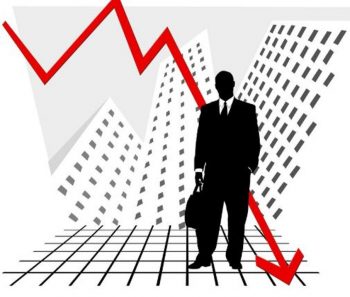
https://www.petroleumafrica.com/oil-companies-seeing-detrimental-impacts-of-covid-19-and-oil-price-drop/
The global Corona Virus pandemic coupled with low oil prices as a
result of he Saudi-Russia production showdown are hitting oil companies
hard. Share prices have plummeted and operations in some quarters are
being stymied as these companies try to comply with best practices in
social distancing to help stop the spread.
This pandemic and oil production war have hit share prices hard and
some independent companies may have difficulty surviving the ongoing
situation. Just a few examples of the share price crash from those firms
operating in Africa are particularly concerning. Below we have listed
an example of those companies operating in the African continent, listed
on different global exchanges:
Panoro Energy – 52 week high 2.49 EUR – March 17 2020 0.47 EUR
Kosmos Energy – 52 week high 7.55 USD – March 17 2020 0.69 USD
Aminex plc – 52 week high 1.65 GBP – March 17 2020 0.45 GBP
Africa Oil Corp – 52 week high 1.66 CAD – March 17 2020 0.82 CAD
FAR Ltd – 52 week high 0.081 AUD – March 17 2020 0.013 AUD
Petroleum Africa will continue to monitor the markets and
provide pertinent updates during this challenging period. We welcome
industry insights and you are welcome to contact us at info@petroleumafrica.com.
Friday, March 20, 2020
Filling Up: The World Has an Oil Storage Problem
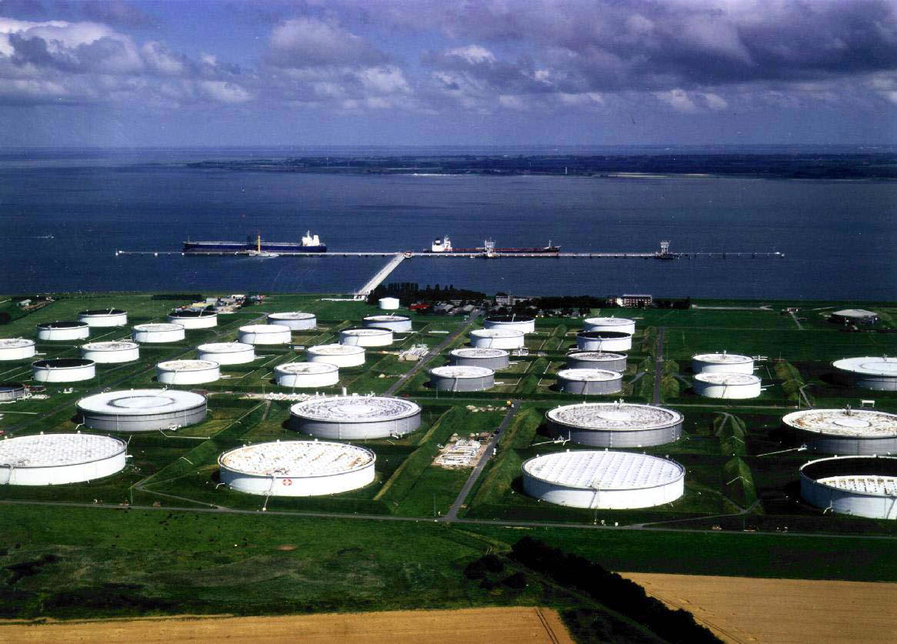
The oil market could see a record supply surplus in April as
coronavirus wipes out demand and big producers pump more, creating a
global glut that threatens to overwhelm storage capacity within months
and force widespread industry shutdowns, analysts said on Wednesday.Crude is already gushing into storage at land and sea worldwide as
countries curb travel and economic activity falls due to coronavirus.
Storage levels are rising even before a wave of supply hits the market
from Saudi Arabia, Russia and other producers who are gearing up to
fight a price war for market share.
US benchmark crude fell to its lowest since April 2002 at $US22.60 a barrel on Wednesday, and is down more than 60 per cent since the start of the year. Brent crude prices have fallen almost 45 per cent in March alone, following the most pronounced demand destruction since the financial and economic crisis of 2008.
As storage reaches capacity, a slide toward $US10 per barrel is possible, according to some investors and analysts. That last happened during the 1998 glut before both oil companies and oil producing nations curbed supply.
Some Canadian crude is already trading not far off $US10 per barrel because of steep price discounts to US benchmark WTI crude.
“We believe we have not seen the worst of the price rout yet, as the market will soon come to realize that it may be facing one of the largest supply surpluses in modern oil market history in April,” said Rystad Energy’s Head of Oil Markets Bjornar Tonhaguen.
IHS Market analysts estimated the global oil supply surplus on a
monthly basis to range between 4 million barrels per day (bpd) and 10
million bpd from February to May 2020 – equal to 4-10 per cent of global
demand.
Standard Chartered Bank expected an “extreme” global surplus
of 12.9 million bpd in the second quarter – 13 per cent of global
demand – and a cumulative surplus exceeding 2.1 billion barrels by the
end of the year – well above the annual output of OPEC’s second largest
producer Iraq.
“Does the world have enough storage capacity to handle it? … For
crude oil, we estimate total spare inventory capacity at 900 million
barrels,” BofA Global Research said.
Goldman Sachs sees over 1 billion barrels of unused storage still available and said while it does not expect the glut to lead to a breach in storage capacity, “it will likely lead to a breach in logistical capacity, meaning ships, pipelines, terminals and processing units.”
Goldman Sachs sees over 1 billion barrels of unused storage still available and said while it does not expect the glut to lead to a breach in storage capacity, “it will likely lead to a breach in logistical capacity, meaning ships, pipelines, terminals and processing units.”
Strategic Reserves
The Organization of the Petroleum Exporting Countries (OPEC) and
Russia failed to seal a deal to cut oil production earlier this month,
as they disagreed on how to respond to the impact on demand of
coronavirus. Since then, OPEC’s de facto leader Saudi Arabia has pledged
to flood the world with cheap oil.
Saudi Arabia now plans to boost its crude oil production to a record
high of 12.3 million bpd in April, and its crude oil exports to more
than 10 million bpd from May.
Some major oil consuming nations like the United States and India have tried to take advantage of low oil prices and bulk their its strategic stockpiles.
Some major oil consuming nations like the United States and India have tried to take advantage of low oil prices and bulk their its strategic stockpiles.
US President Donald Trump vowed to fill the country’s Strategic
Petroleum Reserve to the top. The US strategic reserve has the capacity
to take an additional 77 million barrels of crude, and will fill it over
several weeks.
That is a fraction of the expected global glut. Around 3.3 billion
barrels of oil is stored globally onshore, close to the peak of 3.4
billion barrels reached in early 2017, according to Kpler data. Another
91 million barrels is in floating storage – in vessels at sea. That is
not far off peaks reached in 2009.
The surplus will only get worse if producers continue their price war. It will be “intensified by the fact that other OPEC countries will likely do their utmost to boost exports as their fiscal budget is under pressure due to lower prices,” said Homayoun Falakshahi, senior analyst at Kpler.
The International Energy Agency said on March 9 it expected oil demand to be 99.9 million barrels per day (bpd) in 2020, lowering its annual forecast by almost 1 million bpd and signalling a contraction of 90,000 bpd, the first time demand will have fallen since 2009.
The surplus will only get worse if producers continue their price war. It will be “intensified by the fact that other OPEC countries will likely do their utmost to boost exports as their fiscal budget is under pressure due to lower prices,” said Homayoun Falakshahi, senior analyst at Kpler.
The International Energy Agency said on March 9 it expected oil demand to be 99.9 million barrels per day (bpd) in 2020, lowering its annual forecast by almost 1 million bpd and signalling a contraction of 90,000 bpd, the first time demand will have fallen since 2009.
The IEA said that in the first quarter alone, the virus wiped out 2.5 million bpd of demand or 2.5 per cent.
“We estimate OPEC+ spare capacity at 2 million bpd, and at 3 million bpd if Libya’s nearly 1 million bpd production comes back online. What we are seeing here is essentially the atomic bomb equivalent in the oil markets,” said Rystad Energy’s analyst Louise Dickson.
“We estimate OPEC+ spare capacity at 2 million bpd, and at 3 million bpd if Libya’s nearly 1 million bpd production comes back online. What we are seeing here is essentially the atomic bomb equivalent in the oil markets,” said Rystad Energy’s analyst Louise Dickson.
Thursday, March 19, 2020
Tanker market "strongest in decades" - Nordic American
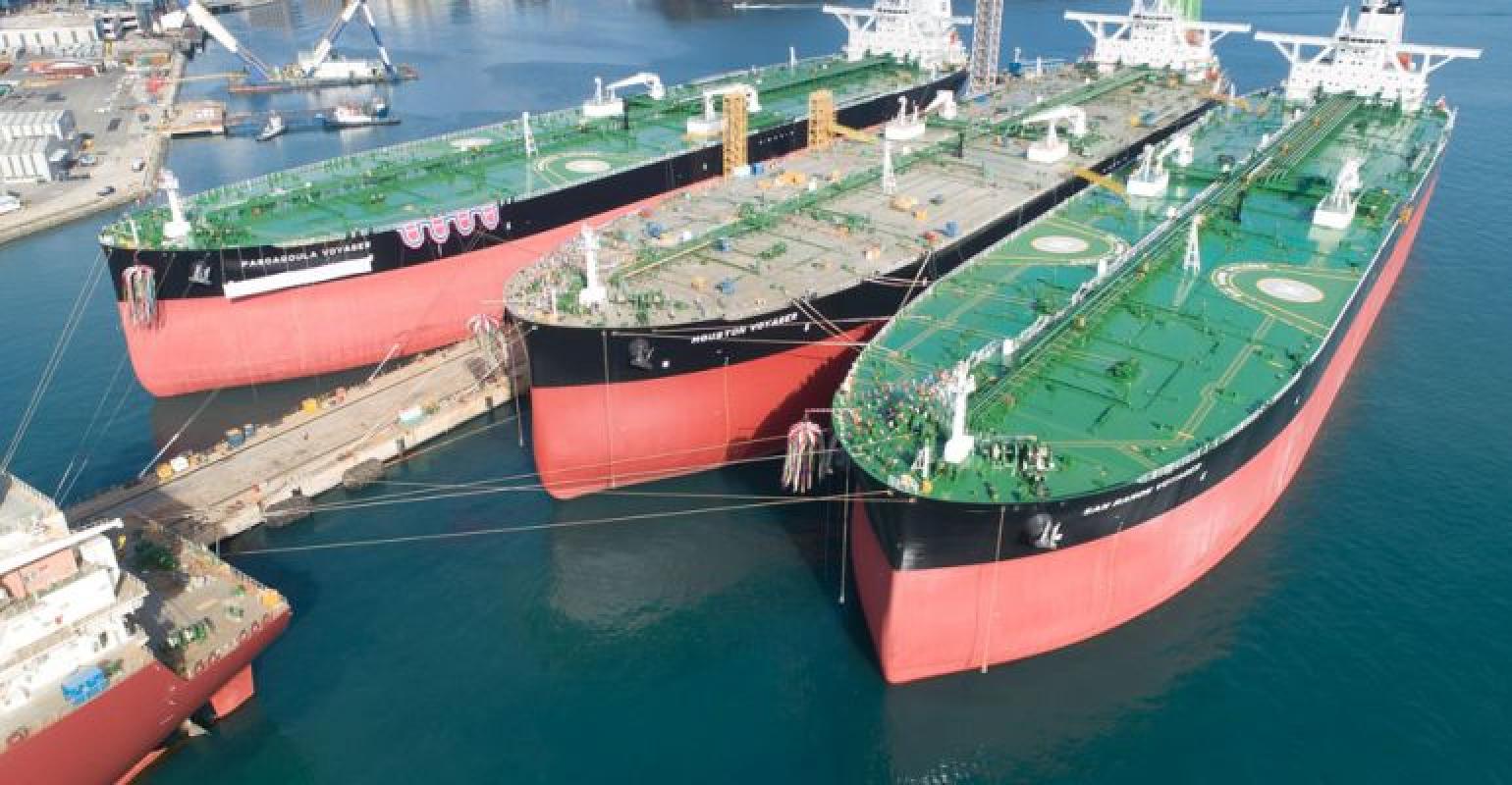
http://www.tankeroperator.com/ViewNews.aspx?NewsID=11449
In a
letter to shareholders, Herbjørn Hansson, Chairman & CEO of Nordic
American Tankers, says that the tanker market is the "strongest we have
seen in decades".
"Increased exports from Saudi Arabia lead to extra demand for tonnage.
As an example, it has been indicated that one million barrels a day
extra from Saudi Arabia to the Far East create demand for about 45
suezmaxes.
"It is simple: Increased demand leads to more transportation work for
our tankers. The last days we have entered into solid contracts for our
suezmax tankers in the region of $65,000 per day to more than $100,000
per day. Our operating costs are about $8,000 per day per vessel. NAT
has 23 suezmaxes which can load one mill barrels each."
Wednesday, March 18, 2020
Oil falls 19% in 3rd worst day on record, sinks to more than 18-year low

A floorhand works on an oil rig in the Bakken shale formation outside Watford City, North Dakota.
Getty Images
U.S. West Texas Intermediate crude fell 19.2%, or $5.19, to $21.76 per barrel, its lowest level in more than 18 years. WTI is on pace for its third worst day on record.
International benchmark Brent crude shed 11.6%, or $3.33, to trade at $25.40, its lowest level since 2003.
“The oil market is about to flood with surplus barrels,” Bank of America said in a note to clients Wednesday.

How low can prices go?
As
demand grinds to a halt, the OPEC+ production cuts currently in place
expire at the end of the month, meaning nations will soon be allowed to
pump as much as they please.
“With each day there seems to be yet another trapdoor lying beneath oil prices, and we expect to see prices continue to roil until a cost equilibrium is reached and production is shut in,” said Rystad Energy analyst Louise Dickson.
“This is the most dismal oil demand picture we have witnessed in a long time with a simultaneous collapse in jet fuel, gasoline, shipping fuel, petrochemicals, and oil used for power generation.”
WTI and Brent crude are on pace for their worst month ever, each down 45%.
“With each day there seems to be yet another trapdoor lying beneath oil prices, and we expect to see prices continue to roil until a cost equilibrium is reached and production is shut in,” said Rystad Energy analyst Louise Dickson.
“This is the most dismal oil demand picture we have witnessed in a long time with a simultaneous collapse in jet fuel, gasoline, shipping fuel, petrochemicals, and oil used for power generation.”
WTI and Brent crude are on pace for their worst month ever, each down 45%.

On Tuesday, Goldman Sachs slashed its oil forecast
for the second quarter, now seeing WTI and Brent averaging $20 per
barrel. The firm believes oil use has fallen by 8 million barrels per
day. “Demand losses across the complex are now unprecedented,” Jeffrey
Currie, the firm’s global head of commodities research, said in a note
to clients.
Unlike prior periods of economic turmoil, including the financial crisis in 2008, the long-term impact of coronavirus is still very much unknown. With more and more market watchers saying a recession looks likely, oil prices could have much further to fall.
“Looking ahead, the path of least resistance is decidedly lower right now and the lower-for-longer dynamic appears to be one that is here to stay for a while, given the clearly bearish fundamentals pointing to a likely longstanding surplus in the global oil markets,” said Tom Essaye, co-founder of The Sevens Report.
Unlike prior periods of economic turmoil, including the financial crisis in 2008, the long-term impact of coronavirus is still very much unknown. With more and more market watchers saying a recession looks likely, oil prices could have much further to fall.
“Looking ahead, the path of least resistance is decidedly lower right now and the lower-for-longer dynamic appears to be one that is here to stay for a while, given the clearly bearish fundamentals pointing to a likely longstanding surplus in the global oil markets,” said Tom Essaye, co-founder of The Sevens Report.
OPEC+ talks unwind
After
talks between OPEC and its allies, known as OPEC+, broke down earlier
this month, Saudi Arabia announced plans to increase its daily
production to a record 12.3 million bpd in April. By comparison, the
kingdom pumped roughly 9.7 million bpd in February. Russia is among the
other OPEC+ nations that has said it, too, could ramp up production.
“Saudi Arabia has become a market arsonist, adding as much fuel as possible to the selling fire, in the form of a maximized capacity output scheme,” Again Capital’s John Kilduff said. “Prices are attempting to find a clearing level or bottom, which I sense will be around the $18.00 per barrel level for WTI,” he added.
As oil prices continue to slide, OPEC-member Iraq on Tuesday urged the 14-member cartel and its allies to hold an emergency meeting, according to Reuters.
- CNBC’s Michael Bloom contributed reporting.
Subscribe to CNBC PRO for exclusive insights and analysis, and live business day programming from around the world.
“Saudi Arabia has become a market arsonist, adding as much fuel as possible to the selling fire, in the form of a maximized capacity output scheme,” Again Capital’s John Kilduff said. “Prices are attempting to find a clearing level or bottom, which I sense will be around the $18.00 per barrel level for WTI,” he added.
As oil prices continue to slide, OPEC-member Iraq on Tuesday urged the 14-member cartel and its allies to hold an emergency meeting, according to Reuters.
- CNBC’s Michael Bloom contributed reporting.
Subscribe to CNBC PRO for exclusive insights and analysis, and live business day programming from around the world.
Tuesday, March 17, 2020
Oil Refiners Face Grim Times Despite Collapse in Crude Costs

Oil refiners’ margins may draw some temporary benefits from the plunge in crude prices, but it won’t be enough to offset the coronavirus’ hit to fuel demand and new plants coming online.
Although crude prices have collapsed due to a price war between
Russia and Saudi Arabia, product prices will take longer to catch up.
For refiners, that creates a short-lived window where margins get a
boost from lower feedstock costs, without a commensurate drop in fuel
prices.
“Refiners will get temporary relief from the cheap crude, but any
sustained increase in runs will see a worsening oversupply situation in
the products markets beyond 2Q after peak turnaround season,” said
Sandra Octavia, an oil products analyst at Energy Aspects Ltd.
Almost every refining margin rose on Monday as crude futures tumbled,
according to data from Oil Analytics Ltd. on Bloomberg. That was to be
expected. Sharp moves in crude oil futures markets are rarely mirrored
immediately and fully by prices of petroleum products like gasoline,
diesel and jet fuel. A look at simple refining margins illustrates the
sudden change.
Although cheap oil usually stokes demand, any benefits this time are
likely to be outweighed by the coronavirus’ negative impact on
consumption as authorities around the world react to the virus’ spread.
Refiners in China and South Korea are cutting runs, while diesel
shipments from these countries to the storage hubs of Singapore and
Malaysia have risen sharply.
“Because of coronavirus, run rates at refineries are under threat,”
said Steve Sawyer, director of refining at Facts Global Energy.
Refiners are also facing an ever-more competitive market. More than a
million barrels a day of plant capacity is expected to be completed
this year, along with close to three million barrels a day next year,
according to BloombergNEF. That’s in addition to about 2.5 million
barrels a day that was commissioned last year.
Storage Access
For refiners looking to take advantage of the collapse in crude
values, much will depend on their access to storage facilities, whether
that’s for holding on to crude or having somewhere to put the fuels they
manufacture. The run cuts in China and South Korea are a result of
plants running out of storage space because demand has been so weak,
according to Sawyer.
India’s refineries, which are currently running at a relatively low
utilization rate, will be best placed to gain from the low crude price,
said David Doherty, downstream oil specialist at BloombergNEF.
The benefit, though, will be short-lived, he said. Indian refiners
export a lot of jet and diesel-type fuels to the European market, where
the coronavirus outbreak is increasingly cutting into oil demand,
particularly for those products.
Russia’s Rosneft PJSC isn’t likely to increase crude production until
April, while Saudi Arabia will probably do the same. As a result, there
won’t be an immediate change in refiners’ crude slates, Sawyer said.
Longer term, the combination of more medium sour crude from those
nations — along with potentially less light-sweet oil as U.S. tight oil
producers feel the pricing pressure — could result in more high-sulfur
fuel oil production.
There’s also perhaps a bright spot: recovery from the virus.
“The number of new coronavirus cases has slowed down in China, and
should the economy show signs of recovery it will support margins,” said
Victor Shum, vice president of energy consulting at IHS Markit in
Singapore.
Monday, March 16, 2020
Cheap Oil Doubles Americas VLCC Freight, Makes for Storage Play
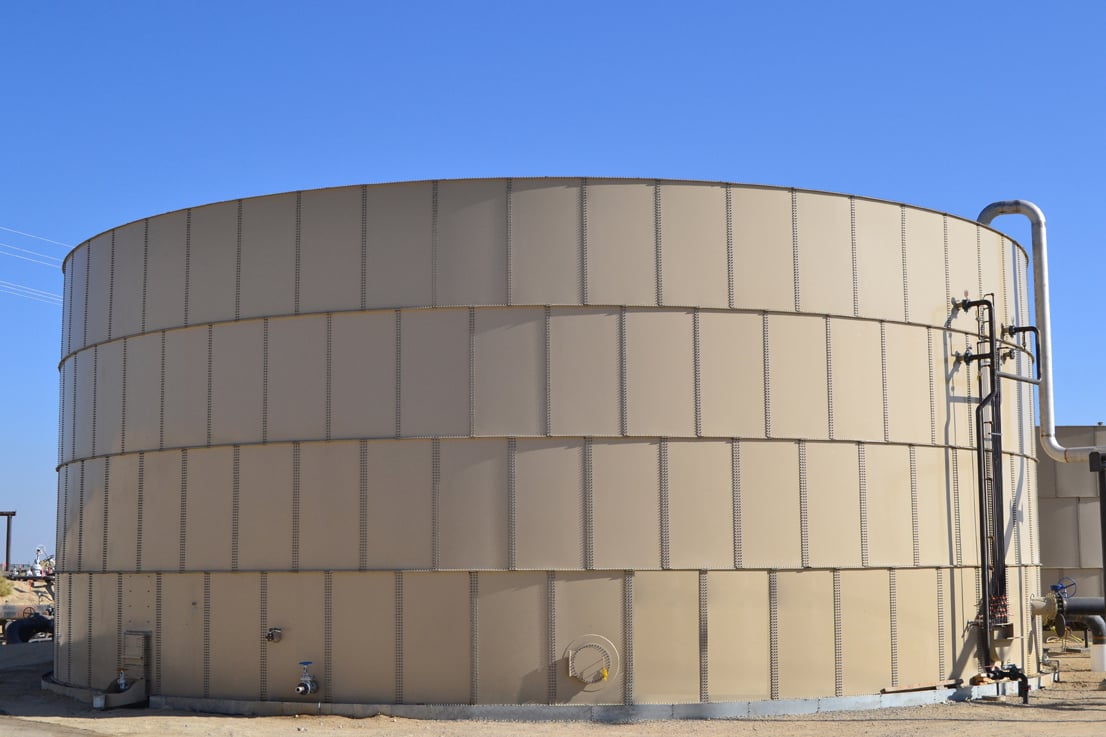
Freight for east-facing VLCCs loading in the Americas soared 112%, or $7.4 million lump sum, this week and 75%, or $6 million lump sum, Wednesday, echoing a more than doubling of the cost of carrying 2 million barrel cargoes from the Arab Gulf to Northeast Asia.
“The Americas VLCC market is all being priced against West Africa-East and Persian Gulf-China freight,” a shipbroker said.
The sharp decline of oil prices after the 23-member alliance of OPEC+
failed to reach an agreement to extend or deepen oil production cuts of
1.7 million b/d that end in March and Saudi Arabia instead taking the
lead in flooding the oil markets with “cheap” barrels resulted in a bull
run on global VLCC tonnage either for single voyage charters or for
floating storage opportunities.
Around three dozen VLCCs were seen booked in the Arab Gulf in the
last 24 hours of the Asian trading day and levels on the VLCC Persian
Gulf-China route were seen trading at Worldscale 155 upon Wednesday’s
Americas market opening, up w40 from the Singapore market close.
Shipowners were looking toward ballasting economics from eastern
markets when offering on six first-half April loading cargoes on
USGC-East routes.
“The earnings equivalent of AG-China is $17 million plus,” a
shipowner said, looking toward last-done levels in the eastern markets.
“It takes $17.5 million for China to match the earnings of what is
currently being fixed in WAF.”
S&P Global Platts assessed the 260,000 mt WAF-Far East route at w120, or at $43.22/mt, Wednesday.
Yet Reliance managed to book the Astro Chloe for the East Coast
Mexico-West Coast India run at $12.5 million loading April 15, the
equivalent of $14 million on the benchmark VLCC USGC-China route, Platts
data showed.
Floating storage viable option for cheap oil
The initial Saudi-induced 30% decline in crude prices on the
Singapore market opening Monday prompted strong charterer inquiry for
floating storage opportunities both offshore Singapore and on the USGC.
Although the current crude price contango, coupled with recent gains
in long-haul freight, did not lend itself to storing oil longer term,
negotiations were heard for six-month time charter terms at
$35,000-$38,000/d ($3.20-$3.50/b) at the start of the week and closer to
$50,000-$60,000/d ($4.60-$5.50/b) mid-week, as major oil companies and
traders were heard willing to tug away comparatively cheap barrels that
seemingly defied crude contango economics.
“I am just watching Brent spreads tick lower and am guessing tank
farms are filling as fast as pipes allow,” a crude broker said Tuesday.
“Today might be $60,000/d and won’t happen anymore,” a shipbroker commented on storage economics Wednesday.
US crude cargoes sent to Singapore, or other Asian destinations known
to be storage hubs, could be positioned there in floating storage for a
possible recovery of Asia Pacific demand in the second quarter as
impacts of the coronavirus ease in the region.
US onshore storage demand spikes on contango economics
Storage economics typically improve during a contango market, when
prompt prices are lower than futures prices. NYMEX WTI settled Tuesday
with April $1.50/b lower than July futures. Further down the curve, in
September, the spread to front-month April steepened to $2.75/b.
Demand for storage onshore US has spiked in recent days as storage
brokers and companies that auction storage have seen an influx in
business and request to provide increased options.
“Storage costs for Cushing have increased from the 25 cents/b per
month to 40 cents/b per month based on the price action we witnessed on
Monday,” Ernie Barsamian, CEO of The Tank Tiger, a terminal storage
clearinghouse, wrote in a note this week. “[US Gulf Coast] export
storage is still in the high 60 cents/b per month range. Interestingly
enough, a big drop in the flat price, while helping the contango emerge,
may negatively impact export storage prices in the long run if US
production is curtailed.”
“In my 40 years, I’ve never seen anything like this. We are sitting
on top of a powder keg for oil,” said Richard Redoglia, CEO of Matrix
Global, which holds monthly crude oil storage auctions along the Gulf
Coast and in Cushing, Oklahoma. “It’s a supply shock on top of a demand
shock.
US crude trading declines as international crude floods in US crude cargo trading activity fell to a near standstill this week
as the international crude market has been flooded with supply and the
April/June Brent/WTI spread narrowed.
An April loading of West Texas Intermediate in Corpus Christi late
Tuesday was talked at a $3/b discount to June ICE Brent futures, the
equivalent of a 92-cent/b discount to Tuesday’s 15- to 45-day Dated
Brent strip. An April loading of WTI FOB in Corpus Christi was later
heard to trade early Wednesday at a $4.50/d discount to June ICE Brent.
Sunday, March 15, 2020
Aramco Slashes Spending as Coronavirus Erases Oil Demand Growth

-
Saudi oil giant cuts capex target by as much as 24% vs 2019
-
Profit slumped 21% in 2019 on lower oil prices and production
Saudi Aramco is slashing planned spending this year in the first sign
that plunging demand and the oil-price war the kingdom unleashed are
hitting home.
Capital expenditure will be between $25 billion and $30 billion
in 2020 and spending plans for next year and beyond are being reviewed,
Aramco said. The oil giant is lowering that range from the planned $35 billion to $40 billion announced in its IPO prospectus, and compares with $32.8 billion in 2019.
“That was the surprise,” Ahmed Hazem Maher, an analyst at EFG
Hermes in Cairo, said of the spending cut. “They’re adding production
in a low price environment so their cash flows could be impacted.”
Cutting investment could help absorb some of the impact of the drop in
oil prices, he said.
The oil-price war led by Saudi Arabia and Russia means more
pain for Aramco as producing nations prepare to boost supply. Discounted
pricing to markets already reeling from weak demand and crude that lost
roughly half its value since the beginning of the year is likely to hit
revenue further.
Aramco
shares fell as much as 1% on Sunday, extending the decline this year to
about 19%. Aramco’s market value has slumped from a peak of over $2 trillion in December to about $1.5 trillion. Aramco executives are set to brief financial analysts of the results at 3 p.m. Saudi time on Monday.
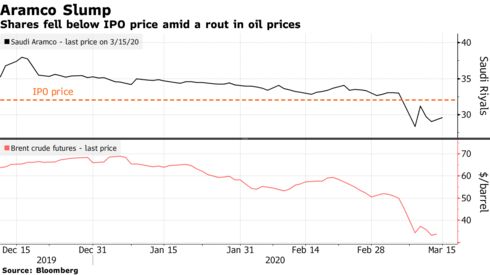
The
coronavirus’ blow to oil use has overwhelmed OPEC’s initial optimism
for demand this year, with analysts now expecting a drop in consumption.
The OPEC+ group’s failure on March 6 to agree on further cuts is only
exacerbating a glut as buyers search for storage tanks and vessels.
“We have already taken steps to rationalize our planned 2020
capital spending,” Chief Executive Officer Amin Nasser said. Given the
impact of the coronavirus pandemic on economic growth and demand, Aramco
is adopting “a flexible approach to capital allocation,” he said.
Saudi
Arabia, Russia and others intend to boost production once the current
accord to lower output expires in March. The kingdom pledged to supply
25% more oil in April than it produced last month, and Wednesday ordered
Aramco to boost output capacity by 1 million barrels a day.
Key 2019 numbers |
|---|
|
|
|
Oil
prices fell last year even as Saudi Arabia trimmed output as part of
efforts between OPEC and other producers to rein in production. Drone
and missile attacks on two of its biggest facilities in September
temporarily slashed production by more than half, but didn’t cause a big
surge in prices.
Aramco reiterated its plan to pay $75 billion
in dividends this year. The company needs to balance its pledge to pay
investors with spending on its upstream projects -- maintaining oil
production and expanding fields -- and boosting its global refining and
chemical operations -- the downstream segment of the business.
“Aramco
can restructure the strategy to concentrate more on the upstream
expansion rather than downstream,” said Mazen Al-Sudairi, head of
research at Al Rajhi Capital. “They can do it easily from their cash
flow. But it might affect the money transfer to the government for one
or two quarters.”

Brent crude averaged $64.12 a barrel in 2019 compared with $71.67
the previous year. Saudi production slipped to an average of 9.83
million barrels a day from 10.65 million in 2018, according to data
compiled by Bloomberg. Aramco restored output to pre-attack levels by
early October.
Aramco’s 2018 net of $111 billion
made it by far the world’s most profitable company, exceeding the
combined incomes of some of the world’s biggest companies including
Apple Inc., Samsung Electronics Co. and Alphabet Inc.
— With assistance by Verity Ratcliffe
Friday, March 13, 2020
Trump to buy oil for strategic reserve to aid energy industry: ‘We’re going to fill it’
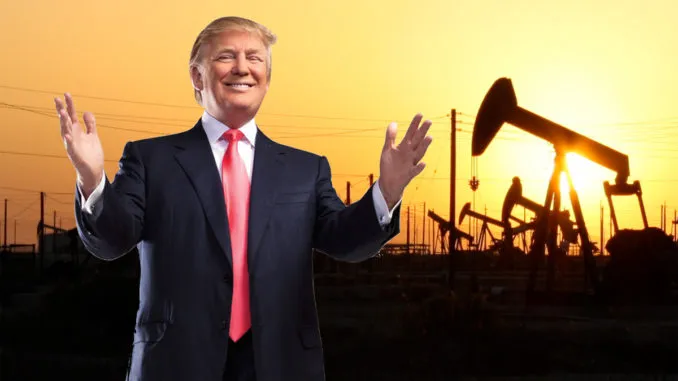
https://www.cnbc.com/2020/03/13/trump-asks-energy-department-to-purchase-oil-for-the-strategic-petroleum-reserve.html
- President Donald Trump on Friday said he’s directed the U.S. Department of Energy to purchase crude oil for the Strategic Petroleum Reserve.
- The move was made in an effort to assist U.S. energy producers, which have been battered this week amid an oil price war between OPEC and Russia.
- “We’re going to fill [the strategic reserve] right up to the top, saving the American taxpayer billions and billions of dollars, helping our oil industry,” Trump said.
President Donald Trump
on Friday said he’s directed the U.S. Department of Energy to purchase
crude oil for the Strategic Petroleum Reserve in an effort to support
the battered energy sector.
“Based on the price of oil, I’ve also
instructed the Secretary of Energy to purchase at a very good price
large quantities of crude oil for storage in the U.S. strategic
reserve,” Trump said.
“We’re
going to fill it right up to the top, saving the American taxpayer
billions and billions of dollars, helping our oil industry [and
furthering] that wonderful goal — which we’ve achieved, which nobody
thought was possible — of energy independence,” he added.
The administration’s move to purchase oil comes after the worst week for crude since 2008
as investors worried over evaporating demand from the coronavirus
pandemic and a production ramp-up by top producers. The sell-off in
crude whacked the equity of the largest energy companies in the U.S.,
with Exxon Mobil and Chevron down 20% and 12% respectively over the week.
But following Trump’s announcement on Friday, crude futures jumped 5% following the president’s announcement.
“It
is a fantastic idea. The SPR is one of the few levers that the U.S. can
pull in times of oil market tumult,” said John Kilduff, founding
partner of Again Capital. “It has served the country well when supplies
get tight or otherwise become unavailable during times of natural
disasters or geopolitical turmoil. Releases of supplies have served to
short-circuit price rallies in the past, and this filling may well serve
to ebb the current sell-off.”
Cheap oil from Saudi Arabia, the
world’s largest exporter, and the United Arab Emirates is aggravating
the pressure on prices after talks to cut production with Russia soured
late last week. Russia, the world’s second-largest producer, does not
appear willing to return to its agreement with the Organization of the
Petroleum Exporting Countries (OPEC), which has kept oil in a range around $30 a barrel for much of the last week.
For the week, Brent is set to fall around 24%, the biggest weekly decline since December 2008, when it fell nearly 26%.
“As
of the latest data (March 6) the SPR was 92 million bbl short of
capacity. This is the perfect time to top it up: prices are low and
we’re engaged militarily in the Middle East. For once, Russia’s loss is
our gain,” said Scott Nations, chief investment officer
of NationsShares.
Oil and gas lobbyists met with White House policy staffers
Wednesday morning to discuss the administration’s response to the
economy, OPEC price war and the coronavirus, a representative for the
American Petroleum Institute told CNBC. Meanwhile, the Energy Department
had on Tuesday suspended the sale of crude oil from the Strategic
Petroleum Reserve that would have put more oil into the market.
The
move to purchase more oil for the U.S. reserve also came as part of the
administration’s response of supporting the American economy that’s
trying to determine to what extend the novel coronavirus will impact
growth. Trump declared a national state of emergency in his Friday speech from the Rose Garden.
— CNBC’s Pippa Stevens and Lauren Hirsch contributed reporting.
Subscribe to CNBC PRO for exclusive insights and analysis, and live business day programming from around the world.
Subscribe to:
Posts (Atom)